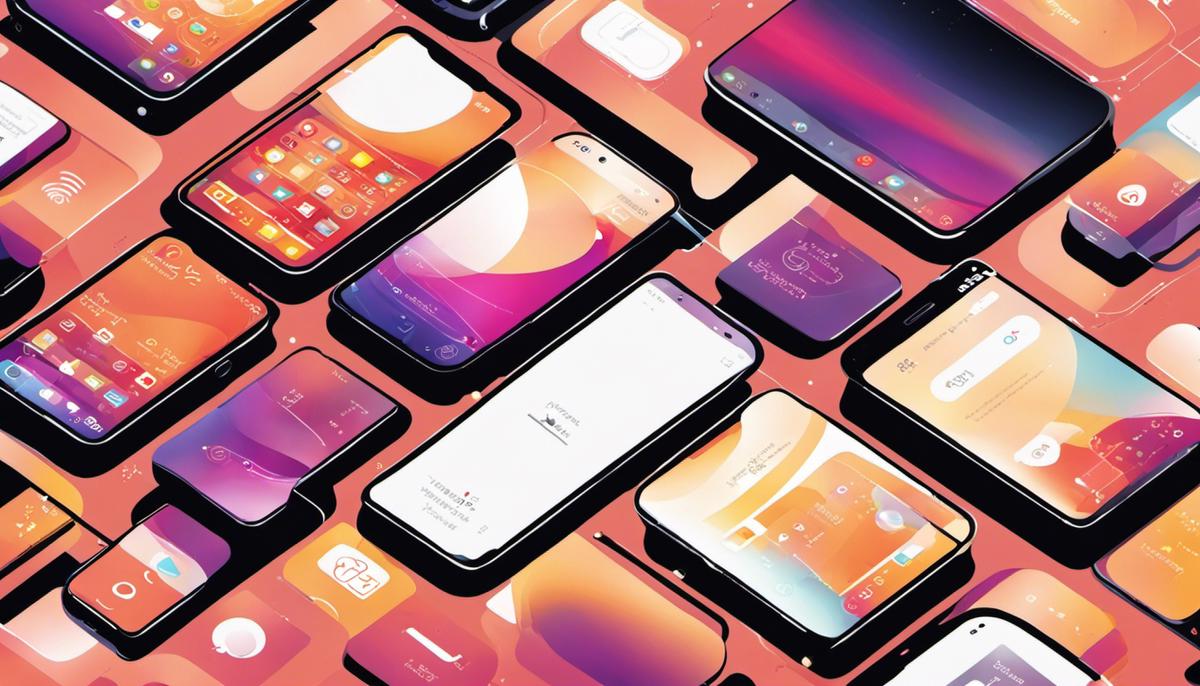The emergence of wifi phone calls has revolutionized telecommunication by utilizing internet connectivity. This innovative feature combines Voice-over-IP (VoIP) and wireless networking to provide a cost-effective, portable, and convenient communication option at the click of a button. However, like any technology, wifi phone calls have their own unique challenges that users must be adept at navigating. This requires a deep understanding of the core functionality, as well as an awareness of the evolving technological landscape to best capitalize on this advancement.
Understanding Wifi Phone Calls
Here’s a deep dive into the fascinating world of Wi-Fi phone calls. Taking a departure from our traditional cellular network-based calls, Wi-Fi calling employs the power of the internet to connect people across the globe, an evolution that’s changing our telecommunication experience for the better.
At its core, Wi-Fi calling leverages a technology called Voice over IP or VoIP. This innovative protocol converts the analog audio signals of our voice into digital data. It then sends this data over the Internet instead of the conventional telecom infrastructure. This modus operandi allows you to make a call from any place with a Wi-Fi network, regardless of the cellular signal there. With the rise of ubiquitous, reliable Wi-Fi networks around the world, this scenario is becoming increasingly commonplace.
Crucial to this process is the role of our smartphones. Equipped with specialized software, they orchestrate this complex conversion and transmission of data. On receiving this digital data, the software reconverts it back into audio signals. This seamless technology ensures that the user experience remains smooth and largely indistinguishable from “normal” phone calls, with the added benefit of not being bound by the limitations of network towers. In essence, Wi-Fi calling is pushing us further towards an interconnected world, reshaping our communication landscapes through advanced technology.

Benefits and Challenges of Wifi Phone Calls
In an era where connectivity reigns supreme, Wi-Fi phone calls have widened the horizon of telecommunication possibilities. Consider the potential for international travelers or the budget-conscious; Wi-Fi phone calls ensure crystal clear voice quality and evade those notoriously crippling roaming charges. Meanwhile, in areas with limited or patchy cellular coverage, this technology offers an alternative pathway for communication, keeping you connected, no matter the physical or geographical challenges.
Yet, just as every coin has two sides, the implementation of Wi-Fi phone calls comes with its share of potential obstacles. Key among these are the dependencies on the strength and stability of your Wi-Fi network. While networks are increasingly robust and numerous across urban landscapes, if you find yourself in an area with a weak signal or heavy network congestion, the call quality or reliability can be severely compromised. Plus, while phone data plans are becoming more affordable, not everyone has access to reliable high-speed internet. This makes Wi-Fi calling inaccessible to certain segments of the population, particularly in developing regions.
Security and privacy are also variables to consider. With standard telephone lines, authorities can quickly identify your location during emergency calls. With Wi-Fi calling, it might take longer or may not be possible. And just like any internet-based service, Wi-Fi calling has the potential to expose users to cyber threats. Individuals should ensure they are connected to trusted networks and adhere to best practices in digital security to mitigate such potential issues.
While the conveniences and advancements Wi-Fi calling technology brings are manifold, understanding these possible challenges allows us to navigate better, implement, and integrate this rapid revolution in telecommunications into our everyday lives.

Evolving Technology Trends Impacting Wifi Phone Calls
Emerging technologies such as artificial intelligence, 5G networking, and enhanced security protocols are significantly impacting the panorama of Wi-Fi calling. As 5G, known for its impressive speed and far less latency, continues to infiltrate the market, Wi-Fi calling is poised to become even more responsive. The increased bandwidth will make it possible for more devices to connect to Wi-Fi networks and seamlessly engage in Wi-Fi calling, thus leading to a massive acceleration in its adoption rate. Users won’t have to fret about dropped calls or low-quality communication, thanks to this high-speed networking, which is designed to handle large volumes of data at lightning speed.
Artificial intelligence, a groundbreaking trend in technology, is also becoming a considerable influencer in the realm of Wi-Fi calling. AI, not just limited to voice assistants like Alexa or Siri, is used in network management to increase efficiency and reliability. Machine learning algorithms are being employed to predict and manage network congestion, optimize bandwidth and improve call quality. It literally gives your network the power to “learn” and “adjust” itself for peak performance.
On the front of security and privacy, technologies such as end-to-end encryption and robust network security protocols have made voice transmissions over Wi-Fi far more secure. This is reassuring for users, as it ensures their conversations remain confidential. Adherence to digital security practices is no longer just a piece of advice but a strict norm to ensure the utmost safety of data.
In conclusion, the increasing incorporation of these high-powered technologies in our daily lives is transforming Wi-Fi calling from a novelty to a necessity. The progression of Wi-Fi calling is in no small part due to the ever-evolving breakthroughs in technology that ensure increased efficiency, speed, and security. With these advancements in play, Wi-Fi calling continues to challenge traditional telephone calling, blurring the lines between technologies while crafting a convenient and connected world.
Leveraging Wifi Phone Calls
To fully extract the value of Wi-Fi calling technology, users have the possibility of integrating other communication modalities that make use of Wi-Fi, such as text messaging, multimedia messages, and even video calling. These integrated modalities not only increase the richness of the communication, akin to face-to-face interaction but also allow individual flexibility in choosing the best form of communication in a given situation.
The integration of Wi-Fi calling with contact management and voice-activated systems is another practical frontier that offers a lot of potential. Integrated systems could potentially allow users to automate or delegate certain types of communication. For example, scheduling software with Wi-Fi calling capability could automatically initiate a voice call to confirm an appointment. Innovative applications like these show that Wi-Fi calling is not just a simple substitute for cellular calling but a versatile tool that unlocks new uses and efficiencies.
Building on the VoIP framework, Wi-Fi calling can even be combined with cloud computing technology for greater performance. Traditionally, a major limitation of VoIP applications was their heavy dependence on the local computational and network resources of user devices. Transferring some of these functions to a cloud-based platform can reduce demand on local resources and potentially enable even more sophisticated features, such as high-definition audio and video, real-time transcription and translation, and efficient multi-party conferencing. This integration of Wi-Fi calling with cloud computing exemplifies how technology can be harnessed to optimize and innovate communication methods.
Lastly, with the dawn of Internet of Things (IoT) devices, Wi-Fi calling gains a manifold of application opportunities between devices. IoT devices can effectively communicate over the accessibility of Wi-Fi, expanding the meaning of calling beyond human-to-human exchange. This interaction between devices presents scope for unprecedented automation and inter-device functionality. The technological synchronization facilitated by Wi-Fi calling confirms its role as a crucial element in the evolution toward a more connected digital world.

Embracing wifi phone calls allows us to re-envision our idea of communication, breaking down traditional barriers and introducing new possibilities. Understanding its intricate workings, evaluating its pros and cons, and keeping abreast with evolving technologies are all stepping stones on a path to leverage this innovative tool effectively. As we continue to stride into a future powered by next-generation connectivity such as 5G, amplified by AI and machine learning, and shaped by our choices and adaptability, harnessing the potential of wifi phone calls will undoubtedly form a crucial part of our interaction patterns. Therefore, staying informed and adaptable to these changes is a necessity, not merely a choice, for individuals and businesses alike.